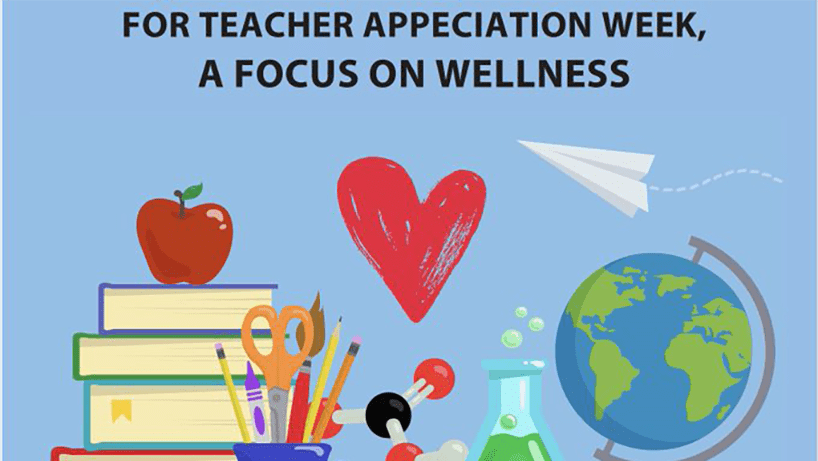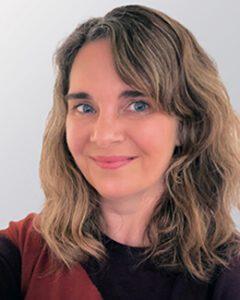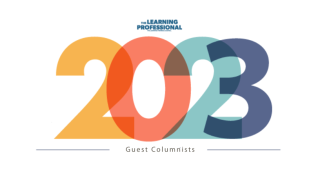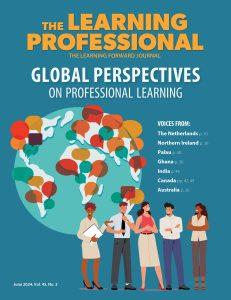Learning Forward celebrates the work of teachers all year long, but during Teacher Appreciation Week, we turn up the volume. This year we’re offering a free bundle of wellness-centered articles to show our appreciation for teachers everywhere. These short articles were written by expert contributors for the 2023 “Focus on Wellness” column in The Learning Professional magazine, normally available to Learning Forward members.
Our guest authors offered strategies and insights from a variety of roles and contexts to show how leaders, colleagues, and community members can support teachers both professionally and personally. The importance of creating supportive environments for educators is underscored by the EdWeek Research Center’s Teacher Morale Index, a new measure from a nationally representative poll that indicates teachers are currently feeling more negatively than positively about their work.
“Wellness is bigger than any one activity or action,” wrote Laura L. Summers, Learning Forward senior consultant and instructor at the University of Colorado Denver, who kicked off the column last year. As a researcher who focuses on educator wellness, Summers reminded readers that a week of teacher appreciation isn’t enough to sustain meaningful wellness practices. In a profession of caregivers, educators must prioritize their own well-being—and that of their colleagues—through strategies that can be learned and repeated. Not only do students thrive in a culture of belonging that is relevant to who they are and the world around them, teachers do, too.
In a profession of caregivers, educators must prioritize their own well-being—and that of their colleagues—through strategies that can be learned and repeated. Share on XHow do we go about doing this work and “how can we get better at cultivating the well-being of our people?” asked Jacobē Bell, network director at Teaching Matters. Bell encouraged education systems to do more to care for teachers, beginning with creating healing-centered environments, which differ from other school climate approaches. Educators are accustomed to getting better at getting better, Bell said, but this usually applies to job performance, efficiency, or effectiveness. Educators must also work together to create a culture of mutual trust and compassion to combat burnout, she said. In her column, Bell offered practices for creating healing-centered environments through cultural grounding, identity restoration, and attention to practitioner healing. “Fostering a resilient school community begins with helping the adults put on their own oxygen masks first,” she wrote.
Building and sustaining resilient school cultures is important so everyone can bounce back from adversity, which is common in schools, to move toward success, wrote Victoria E. Romero, author and professional learning facilitator. Studies show that even before the pandemic, educators frequently felt frustrated, overwhelmed, and stressed. This “adversely impacts cognition, decision-making, and [the] ability to maintain relationships, physical health, and emotional well-being,” Romero wrote. She recommended taking steps to support educators, including a set of actionable wellness strategies that leaders can put into practice immediately.
Teacher collaboration is one of the avenues author and educational leader Allyson Apsey uses to approach teacher wellness. Peer collaboration around instruction and student learning benefits not just curriculum alignment, but bolsters teachers in other ways, too. Instead of using meeting time for putting out metaphorical fires or getting caught up on administrative tasks, teachers can use their time to learn about instructional strategies they can do right away – and most would rather do so. Working together with purpose “can help restore teachers’ purpose and morale,” Apsey wrote.
The concept of ubuntu, a concept of African philosophy, emphasizes our interconnectedness and the importance of communal well-being as a critical aspect of self-care. Julia Mahfouz explained how it “is intricately linked with what psychologists and sociologists refer to as prosociality—extending our inner selves for others,” wrote Mahfouz, who is an associate professor in the School of Education and Human Development at the University of Colorado Denver. Through her work with the Soul of Leadership program, she and her colleagues have found that school leaders derive meaning from their work through giving back and actively participating in their educational communities.
Heather Lageman wrapped up the column with a focus on our shared humanity. “Wellness is about tapping into who we are and who we can become as human beings,” wrote Lageman, the executive director of organizational development and leadership at Baltimore County Public Schools in Maryland. When Lageman started experiencing warning signs of burnout – not feeling rejuvenatd after doing activities that normally replenished her – she got curious and worked with a coach. She discovered great value in purposefully examining her core values and their alignment to the values in her workplace, while also setting personal boundaries and goals. As a result, she felt an expansion in her ability to lead and be a more present colleague. “After doing this work to tap into my own humanity, I began to feel more energized, more hopeful, and more like myself again,” Lageman wrote.
With this wellness-centered article bundle, we hope you discover some tips or strategies you would like to try or emphasize so you and your colleagues can end the school year a bit more renewed, energized, and hopeful. As our authors have pointed out, investing in the well-being of teachers, and those who support them, benefits everyone in schools—most importantly students. If you’re not sure where to begin your efforts to create a culture that prioritizes well-being, Jacobē Bell said to start by talking with your staff: “Ask the hard questions. Sit in discomfort and do generous listening.” She encourages educators to get creative and stretch the limits, she wrote, “Dreaming is where change first begins. Dream big, critically reflect, and then take action.”







